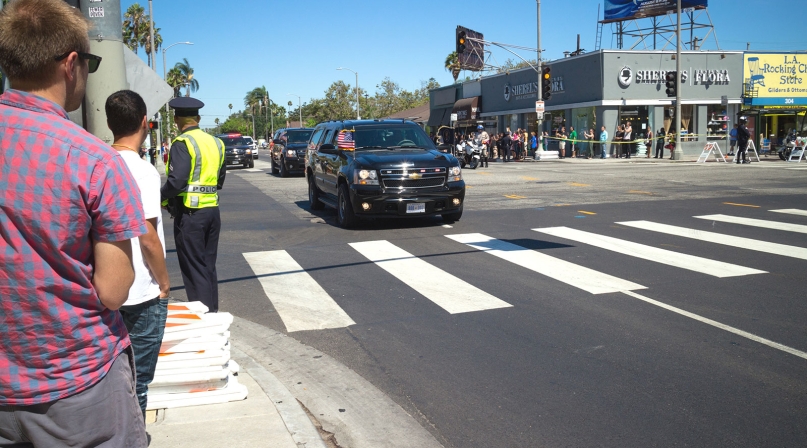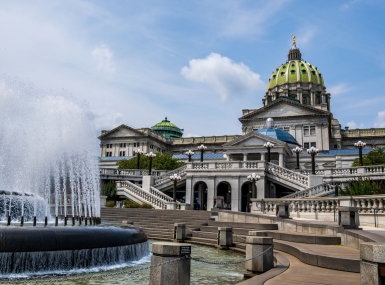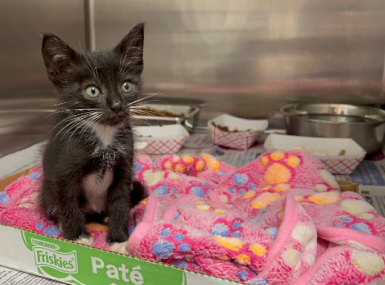Anytime a President Visits…

In our neighborhood a few days ago, an event took place that indirectly or directly reflects on the core of our pride in being an American.
The current president, whatever any individual thinks of his administration, holds an office specifically designed in the Constitution to be merely temporary. When any president, however, visits a local community, the visit generates excitement, concerns, expenses and hopes in the general population, and among government officials. The flags come out and the pride in our country revs up, not to mention the traffic control barricades!
This recent visit brought hundreds of law enforcement and other government employees out to prepare the way, review security and logistical issues, and take appropriate actions to make the visit safe and successful — both for the president and for the average citizen. That citizen may either try to attend the crowded event or choose to stay at home and watch part of it on the giant 4k television screen at home.
Such a visit has a special meaning for county or city elected and appointed officials in the area where the visit will take place. Law enforcement and Fire-Rescue, for example, are overwhelmingly local government property tax-supported agencies. They already generate huge costs, often beyond what is anticipated in budget preparation for the next fiscal year. This is because they are the first responders, not only in times of crisis or acute need, but they are also the “first responders” when it comes to extracting from the general fund unexpected expenditures like overtime costs and infrastructure needs. In a world where natural disasters can come with very little warning and wreak incredible sustained costs and damages, the best we can do as human “budgeteers” is try to build up reserves and interagency relationships to deal with these inevitable elements of our lives.
So it is with a presidential visit where agencies cooperate, perhaps as they never would do otherwise, except in a case like hurricanes or earthquakes. Having spent much time in emergency operations centers during natural disasters, I have seen firsthand the agency representatives sitting next to each other determining how they can best help without paying much attention to what color their uniforms are or what the shape of their badges might look like. The same is no doubt true of a presidential visit.
In community-wide natural disasters, it is basically county government that is the lead agency in marshaling the support and resources of cities, school districts and other agencies in the area, but also the resources which might be made available by neighboring counties or state governments.
The same should be true when counties respond to the arrival of FEMA representatives who flash their impressive badges and credentials and begin issuing instructions. There is often a real conflict in these cases because the resources FEMA or other federal agencies might bring to bear are far greater than a local government typically has available. As “locals,” therefore, we need to be respectful, grateful, and, as much as possible, compliant with their requests. We need to recognize that in certain areas they have expertise and contacts that none of us in local government have. Likewise, FEMA representatives need to be very gentle and perhaps assertively reminded that the security of a particular county or city is the primary reason why local elected officials are in office in the first place. The “feds” need to respect the wishes and the directions which local government leaders may provide. This is a delicate balance. It remains delicate after the immediate disaster, or visit, is over and the parties face the need to discuss who will pay, reimburse, or otherwise help with that overtime, or recovery costs, etc.
However, in the case of a brief presidential visit, perhaps no more than a couple of hours, the overwhelming issue is security and with the overwhelming expertise and responsibility resting with the Secret Service. They bring with them a degree of experience, knowledge, equipment and training that no police agency or sheriff’s department can match. The number one imperative is to cooperate and let them lead the effort. And that was the case in the visit of a few days prior to the creation of this article.
Many years ago — “many” being the operative word — the college student version of the HR Doctor was commander of the brigade of cadets at one of America’s greatest colleges — UCLA. This group of future Army officers had a role in the visit of another president, Lyndon Johnson. We served in a minor security role of helping keep crowds back. The cadets got to see the president and, in my case, stand in front of him along with many others as he reached over our shoulders to shake hands with people. We felt an excitement about the visit, notwithstanding appreciating the protests dealing with the war in Vietnam as well as civil rights and the “War on Poverty.”
Our excitement about the visit was tempered by worry over the security of the president during the visit. My tiny “nano” role in the visit notwithstanding, I joined everyone else involved — hundreds of “everyone elses” — in breathing a great sigh of relief when the visit ended successfully and the president flew off into the sunset to wherever his next engagement was.
There are certain clear similarities between all the preparation, the excitement, the worry and the great relief associated with a presidential visit just as there is with handling any other major event. These might include the inauguration of a new president, a major local community event like a parade or the opening of a new facility.
What makes the difference between success and unthinkable failures in all of these management challenges involves a “recipe” with only a few basic ingredients. First, anticipate risks and opportunities. Next, establish (far in advance of an actual event) strong bonds of cooperation and mutual support with agencies, community organizations and private citizens. Then, add an important “dash” of taking steps to act on potential risks and mitigate or prevent them. Finally, end with appreciation, recognition of hard work and celebration to enjoy the moment and reflect on success in meeting a difficult management challenge.
All of this relates to an oft-repeated fundamental principle of the HR Doctor’s for many years: “Act Now to Put Off the Day When Something Bad Happens!” For me as an experienced public administrator, former county chief administrative officer, longtime human resources director, former intelligence officer and hubby/daddy, the value of learning how important that principle is in life has never been greater.

Attachments
Related News

Pa. counties consider furloughs, loans as state budget lapse continues
For the third time since 2015, an unresolved state budget dispute that has dragged on for several months has left counties without the revenue that they depend on to provide critical services.

County library cooks up interest with chef series
Orange County, Calif.'s library system drew in new patrons by introducing its offerings through a cooking video series.

County repurposes airport’s lost and found items for animal shelter
Broward County, Fla. staff made use out of items left behind at the county airport.
